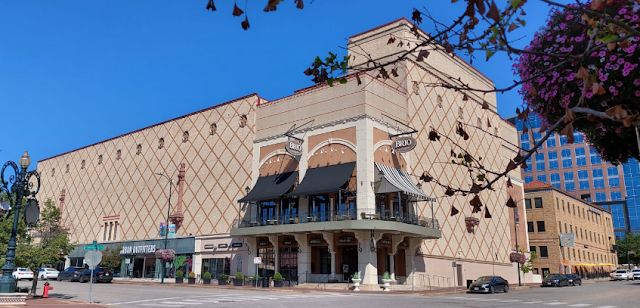First off, an Airbnb warning. We have had to switch to mostly hotels onn this trip. A huge disappointment. Places are listed as $50 to $60 a night but then they include some wildly high cleaning and service fees. We have attempted to negociate those fees on this trip and they won't budge. Below are some very common examples of what we have found in all the cities or nearby cities. Airbnb, you have taken advantage of what was a very good thing. There are two prices, the nightly rate and then the final price.
Believe it or not, we are in Hudson, Ohio spending the weekend with friends Brenda and Mario and their three children. We will be heading back to Monterrey tomorrow Sunday the 22nd of September. I haven't had time to post. Too many people and places to see. As of this post we were still in Kansas City for the week and getting ready to head to Justice, IL, northeast of Chicago.
We took off and left all the family behind during the day and went downtown. A beautiful place to learn about architecture and history but you rarely see anyone walking around on the sidewalks. In fact, we see quite a bit of public transportation but it is always empty. Taking into account our hotel location we could have easily taken the bus or trolley. However, the cost for non-monthly riders is prohibitive and cheaper for us to drive straight down Main St. some 40 blocks and park at the market for free. As we were walking around the market, the trolley passed by several times but again, it was always empty or with a rider or two.
We arrived at the museum for the Steamboat Arabia first. Quite a story. The steamboat traveled the Missouri River taking goods back and forth. On one particular trip, the ship was filled with cargo to go west for pioneers settling the great open plains of what would soon become states in the U.S. The shipped carried 77 passengers and crew, a donkey and four cargo holds filled with any and everything that a person setting up house and farm would need. I won't make the list, you can see it in the photos below.
In 1856, the ship caught a snag, a giant log that had fallen and stuck in the mud of the river. The snag was lodged inside the hull of the ship. The passengers swam to shore, the ship went down with all the cargo aboard and also a donkey that was tied to the deck.
Many people had looked for the ship and its loot as the years went by. Never any luck. In 1988, a family of brothers and a father shared the story with a friend who owned a restaurant. They decided to invest in the search and hopeful recovery. Rivers move with heavy rains and flooding. Over the 135 years, the river had moved half a mile. The ship was found buried under a cornfield. The owner agreed to the excavation and work began. Well, they struck gold and the rest is history.
Aerial satellite view of the corn field, the river and the ship location.
They began pulling out all of the goods in the four cargo holds with the intentions of getting rich. Instead, they made a deal with the state of Missouri and Kansas City. The museum was built including a laboratory to clean and restore the items. Luckily, almost all of the goods had been well reserved in the cold waters and mud. Cleaning was the major step and revealed life as it was for the pioneers heading west. The museum houses what now appear to be stores and shops from the time housing all of the goods. On the day that the dig revealed stores of preserved foods in jars, one of the brothers opened a jar and ate the pickles right there on the spot. He said they were sweat and crisp!
Porcelain pulled from crates in the ship's hold.
A clothing store.
Guns and ammunition. The glass in the window was found well wrapped and in the ship's hull and survived the sinking and the years.
After touring the steamboat, we headed across the street to the city market. was built along the river bringing in all those goods. The market dates back to the 1850s and has morphed overtime into a trendy upper class hangout but maintains its original purpose. Nothing is static. It was originally a venue for produce sellers, politcal rallies, and concerts. In the 20s, immigrants had set up shop selling goods and produce. It stayed that way until the late 70s. Mostly Italians and Germans. In 1907, my grandfather came and set up house and to check out life in the U.S. He entered through Ellis Island, returned to Croatia for my grandmother. My dad was born in 1910 but didn't start school until he was ten. He didn't speak English so they wouldn't let him enroll.
The market today is filled with gift shops, restaurants, produce shops now owned and managed by a new wave of immigrant; Middle Easterners, Mexicans and southeastern Europeans.
Amazing that supermarket prices are much higher and that these prices pretty much mirror those of Mexican supermarkets.
On our last day we went to have breakfast at a Mexican restaurant. Great people from Jalisco. We chatted for quite a bit and talked about all the good and bad of what is happening now. BTW, on the back burner for us might be moving to the U.S. or at least buying a place in case things do not improve soon. Sad, but we have both reached that reality.


























































